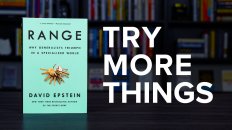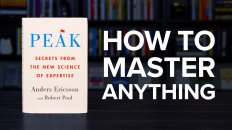Friction is anything that causes people to waste their time, energy, or money. Businesses that reduce friction in their products can more easily attract, convert, and satisfy customers. So, let’s review three key insights from Friction by Roger Dooley.
This book is for entrepreneurs, product managers, marketers, and anyone else in a position to eliminate friction. It explains how to make life easier for customers (and employees) by simplifying everyday tasks. The elimination of friction can result in new internal workflows, new products or services, and even new startup businesses.
Friction Is Everywhere, But It’s Often Unnoticed
Most products and services are layered in friction. Customers are often required to jump through hoops to discover, understand, or make use of them. Over time, people can become so accustomed to recurring frustrations that they just put up with them.
The taxicab industry, before the arrival of Uber, is an excellent example. Getting a cab often involved phoning a dispatcher, waiting for the correct taxi to arrive, explaining your destination, and having an acceptable payment method available.
Any number of things could go wrong in the process. You might not know your current location, perhaps you attempt to get into a cab only to find out it’s for someone else, the driver might misunderstand your destination, or the credit card machine could be down at the moment, requiring you to have cash available.
It’s only in hindsight that we can see just how broken this experience was. Uber now makes it easy to schedule a cab with an app, set your destination, handle payment in advance, and even track the vehicle’s arrival. As a result, few would choose to return to the previous solution, given a choice in the matter.
The key takeaway here is that friction is everywhere, but it can go unnoticed for years or even decades. Furthermore, it often takes an outsider to identify and eliminate such friction. In some cases, customers can serve the role of outsider, but businesses must be prepared to listen and understand their feedback.
Reduce Friction To Increase Activity Or Results
Not only does reducing friction make a task easier, but it also increases the likelihood that people will engage in the task moving forward. For example, people turn to Uber more often than they would use traditional taxicabs. The improved convenience makes it more appealing as a solution for a growing set of use cases.
“When you reduce friction, make something easy, people do more of it.”
~ Jeff Bezos
Amazon’s relentless focus on making life easier for customers has had a similar impact on the way people shop online. They offer instant access to user reviews, a one-click checkout process, fast and free delivery, and the option to order by voice using Alexa. All of this causes people to order more frequently than they otherwise might.
The same is true of Google’s improvements to the way we search for information. By offering a simple interface, auto-completion of search phrases, voice-based search options, and direct answers to common questions (without the need to click a search result), they increase the rate at which we search for answers.
As a final example, consider how McDonald’s has found new and innovative ways to make fast-food even faster. Quicker food preparation, drive-through service so we don’t have to get out of the car, self-serve kiosks in the restaurant to shorten lines, and even the option to order directly from the McDonald’s app. And again, all of this causes people to choose fast-food more often than they otherwise would.
If something is easy, people will do more of it. The inverse is also true. If something is difficult, people will do less of it. That is why governments often limit the way cigarettes can be sold, purchased, and used. By increasing the friction associated with smoking, they reduce the rate at which people turn to cigarettes.
Reducing Friction Adds Highly-Scalable Value
There are many ways to attract, convert, and satisfy customers. For example, you can offer special discounts, include limited-time bonuses, or generate social buzz by doing something surprising for a customer. Unfortunately, while these options can be effective, they don’t scale because they can’t be offered to 100% of customers.
A key advantage of reducing friction is that it’s highly-scalable. When you find simple ways to make it easier for customers to buy, use, or share your product, it improves every future customer’s experience. For digital solutions, like cloud-based platforms or digital apps, new enhancements can also reach existing customers.
The changes don’t need to be massive either. Relatively small improvements that save a few clicks here or there can quickly compound with other tiny changes. Over time, as with Uber, Amazon, Google, and McDonalds, many minor adjustments can lead to a massive leap forward in customer experience.
With this in mind, reducing friction is one of the most valuable things you can do for customers. It can positively affect customer acquisition, word-of-mouth referrals, product reviews, repeat purchases, and brand loyalty. With this in mind, it should be a top priority at all levels of an organization, big or small.
Beyond The Friction Book Summary

This summary of Friction by Roger Dooley is just a preview of how to think about addressing friction in your products, services, and internal processes. The original book provides many more practical examples as well as additional advice.
If you’re an entrepreneur, product manager, marketer, or anyone else interested in reducing friction, it’s time to pick up a copy of the book. Friction is available from Amazon and Apple Books.
Are you looking for other great business books? Consider checking out the best digital marketing books, the best product management books, or the best startup books.
You can also subscribe to The Rick Kettner YouTube Channel or The Rick Kettner Podcast to get updates about future book summaries and reading lists.
Do You Have A Question Or Comment?
Please visit the Friction book summary video on YouTube to share your thoughts in the comment section.


